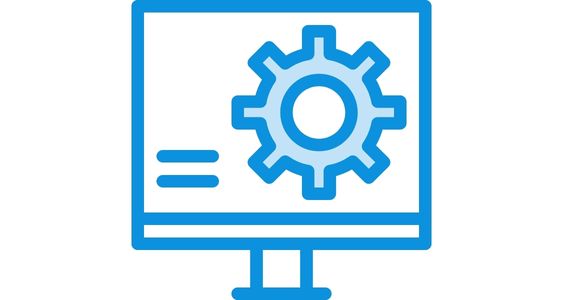Are you encountering persistent connection issues with 127.0.0.1:57573? This local loopback address and port combination can be a source of frustration for developers and network administrators alike. Whether you’re testing a web application, configuring a server, or troubleshooting network connectivity, understanding the intricacies of this localhost address is crucial. In this comprehensive guide, you’ll discover the common causes of 127.0.0.1:57573 connection problems and learn step-by-step solutions to resolve them. By the end of this article, you’ll be equipped with the knowledge and tools necessary to diagnose and fix these issues, ensuring smooth local network operations for your projects and applications.
What is 127.0.0.1:57573?
127.0.0.1:57573 is a specific combination of an IP address and port number used for local network communication. This address plays a crucial role in web development, testing, and debugging processes.
Understanding the Loopback Address
The IP address 127.0.0.1, also known as the “loopback address” or “localhost,” refers to the local machine itself. It allows a computer to communicate internally, creating a closed loop for testing and development purposes. This unique address enables developers to work on applications without affecting external networks.

The Significance of Port 57573
The number 57573 represents a specific port on the local machine. Ports are crucial for identifying particular services or applications running on a device. When combined with the loopback address, 127.0.0.1:57573 indicates a local server or application accessible only from the same computer.
Practical Applications
Developers frequently use 127.0.0.1:57573 for various purposes:
- Testing web applications in a controlled environment
- Debugging network services without external interference
- Developing and testing APIs independently
- Running multiple services simultaneously without conflicts
Understanding and properly configuring 127.0.0.1:57573 is essential for efficient local development and testing processes. It provides a secure, isolated environment for developers to refine their applications before deployment to production servers.
Why is 127.0.0.1:57573 Used?
Local Development and Testing
The IP address 127.0.0.1:57573 is primarily used for local development and testing purposes. This loopback address allows developers to test web applications, APIs, and network services in a controlled environment before deployment. By using 127.0.0.1:57573, developers can simulate network connections within their own machine, bypassing external network interfaces.
Enhanced Security
One of the key benefits of using 127.0.0.1:57573 is the enhanced security it provides. Since this address is inaccessible from external networks, it creates a safe space for testing potentially vulnerable applications. This isolation ensures that sensitive data and experimental features remain protected during the development phase.

Efficient Communication
127.0.0.1:57573 facilitates faster internal communication by eliminating the need for network hardware processing. This efficiency is particularly useful when running multiple services simultaneously without interference. The specific port number (57573) allows developers to designate and manage different applications or services running on the same machine, streamlining the development process.
Troubleshooting and Diagnostics
Developers often use 127.0.0.1:57573 for troubleshooting network issues. By isolating the application to this local address, it becomes easier to identify and resolve problems related to connectivity, port conflicts, or firewall settings. This approach simplifies the debugging process and helps ensure smooth operation before deploying to production environments.
Main Functions of 127.0.0.1:57573 Local Host:
Testing and Development Environment
127.0.0.1:57573 serves as a crucial tool for developers and system administrators. This local host address enables internal communication within a device, providing a secure environment for testing and developing web applications and network services. By using 127.0.0.1:57573, developers can conduct thorough internal tests without exposing their work to the public internet.
Debugging and Optimization
One of the primary functions of 127.0.0.1:57573 is to facilitate debugging and optimization processes. It allows developers to simulate real-world network conditions and test security protocols in a controlled setting. This localized environment speeds up the troubleshooting process, as it bypasses the need for external network communication.
Secure Local Services
127.0.0.1:57573 plays a vital role in accessing local services, databases, and web servers securely. As noted in a recent podcast, this loopback address ensures a secure and controlled testing environment without affecting the live production environment. It’s particularly useful for running and managing applications that require isolation from external networks.
Improved Performance and Security
Using 127.0.0.1:57573 offers several key benefits. It enhances security by making the address inaccessible from outside the device. Additionally, it improves performance by enabling faster communication within the system. These advantages make it an essential tool for developers working on sensitive projects or those requiring rapid iteration and testing.
Common Issues and Fixing Tips:
Port Conflicts and Usage
One of the most frequent problems with 127.0.0.1:57573 is port conflicts. If another application is already using this port, you’ll encounter connection issues. To resolve this, use the netstat command to check for port usage. If the port is occupied, either stop the conflicting application or change the port number in your application’s configuration. According to TechHBS, verifying the correct port number is crucial, as each application is configured to use a specific port.
Firewall and Security Settings
Firewall blockages can prevent traffic on port 57573, causing connectivity problems. To address this, you’ll need to configure your firewall to allow connections to this specific port or add an exception for the application using it. As noted by Detechted, proper firewall configuration, including creating rules to allow traffic on port 57573, is essential for ensuring smooth communication.
Service and Network Configuration
If the service at 127.0.0.1:57573 is inaccessible, confirm that it’s running on your computer. Refer to the application’s documentation or use the appropriate command to start it. Additionally, verify your network configuration settings, including IP address, subnet, and gateway. Viviweek suggests restarting the LXSSManager service for WSL (Windows Subsystem for Linux) as a potential fix for connectivity issues.
Advanced Fixes for 127.0.0.1:57573: Step-by-Step Solutions

Resolving Port Conflicts
One common cause of 127.0.0.1:57573 connection issues is port conflicts. To diagnose this, use the netstat command on Windows or lsof on Mac to check for applications using port 57573. If a conflict is found, consider changing the port number in your application’s configuration file. For web servers like Apache, modify the configuration file to use a different port, such as 8080, and restart the server.
Adjusting Firewall Settings
Firewall blockages can prevent connections to 127.0.0.1:57573. To resolve this, create a new firewall rule allowing traffic through port 57573. On Windows, access the Windows Defender Firewall settings. On Mac, review the Security & Privacy preferences. After adjusting settings, test the configuration and monitor for any anomalies.
Troubleshooting WSL Issues
For Windows Subsystem for Linux (WSL) users experiencing 127.0.0.1:57573 errors, try restarting the LXSSManager service. This can resolve issues related to the WSL file system. If problems persist, consider updating WSL and related components to ensure compatibility.
Implementing Advanced Security Measures
To enhance security while working with 127.0.0.1:57573, consider implementing end-to-end encryption and regular security audits. These measures can help protect your local development environment from potential vulnerabilities. Additionally, use secure login methods and keep all software up-to-date to maintain a robust security posture.
FAQs About 127.0.0.1:57573
What is 127.0.0.1:57573?
127.0.0.1:57573 is a local host address, also known as a loopback address, that refers to your local machine. It allows for internal communication within the device, specifically on port 57573. This address is commonly used for testing and developing web applications and network services in a secure, controlled environment.
Why am I experiencing connection issues?
Connection issues with 127.0.0.1:57573 can stem from various factors. Common problems include port conflicts, incorrect port numbers, lack of permissions, or firewall blocking. Additionally, an unresponsive local server or misconfigured network settings might be the culprit.
How can I troubleshoot these issues?
To resolve 127.0.0.1:57573 connection problems:
- Verify security and firewall configurations.
- Check application settings and ensure the correct port number.
- Restart the LXSSManager service if using Windows Subsystem for Linux.
- Run the command “netsh http add iplisten 127.0.0.1” to enable listening on the IP address.
- Update related software and drivers.
If issues persist, consider exploring alternatives like cloud hosting or virtual private servers to avoid local connectivity problems.
Conclusion
As you troubleshoot connection issues with 127.0.0.1:57573, remember that persistence and methodical testing are key. By systematically working through network configurations, firewall settings, and application-specific parameters, you can isolate and resolve the root cause. Don’t hesitate to leverage built-in diagnostic tools and seek guidance from official documentation or community forums if needed. With a clear understanding of the localhost concept and common pitfalls, you’re well-equipped to tackle similar issues in the future. Mastering these troubleshooting skills will not only resolve your current problem but also enhance your overall networking expertise. Stay curious, keep learning, and approach each challenge as an opportunity for growth in your technical journey.
See Also: 127.0.0.1:49342 – The Ultimate Guide to Understanding Local IP Addresses and Ports





